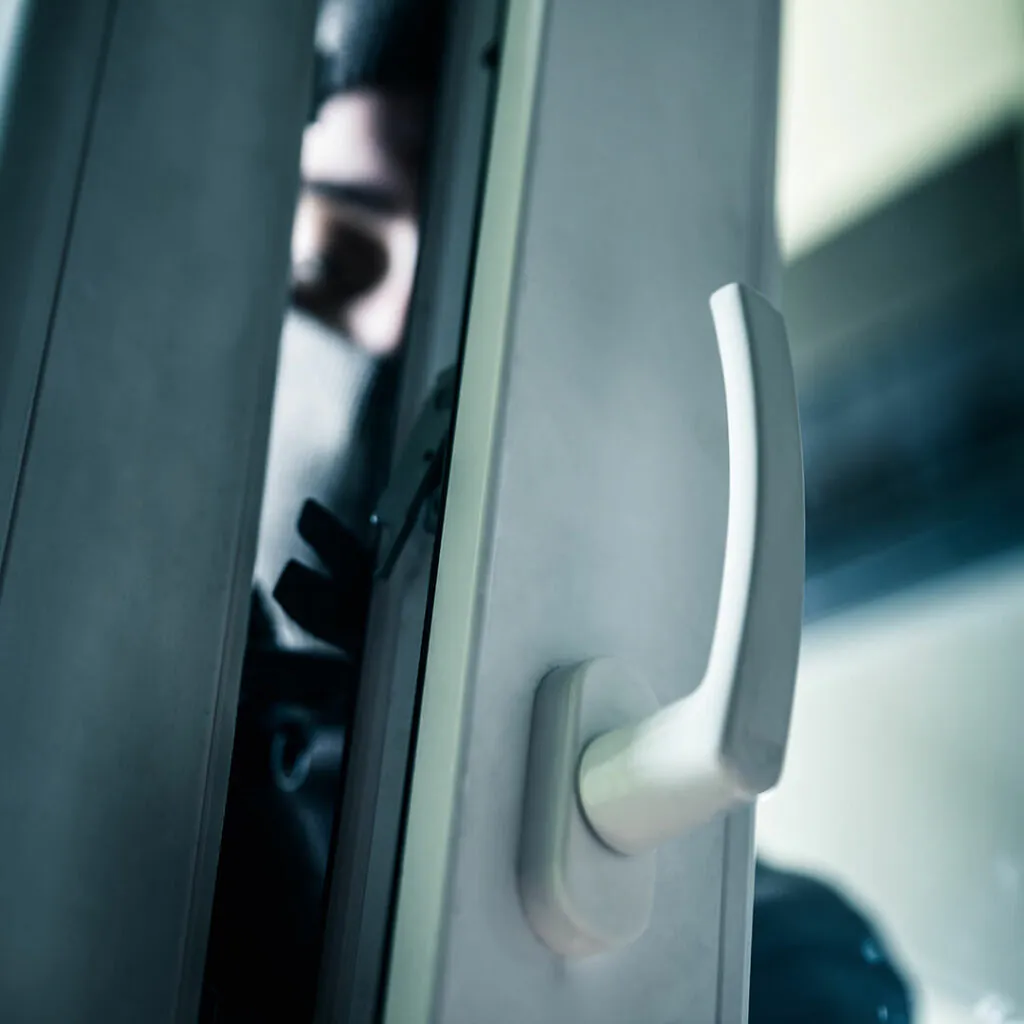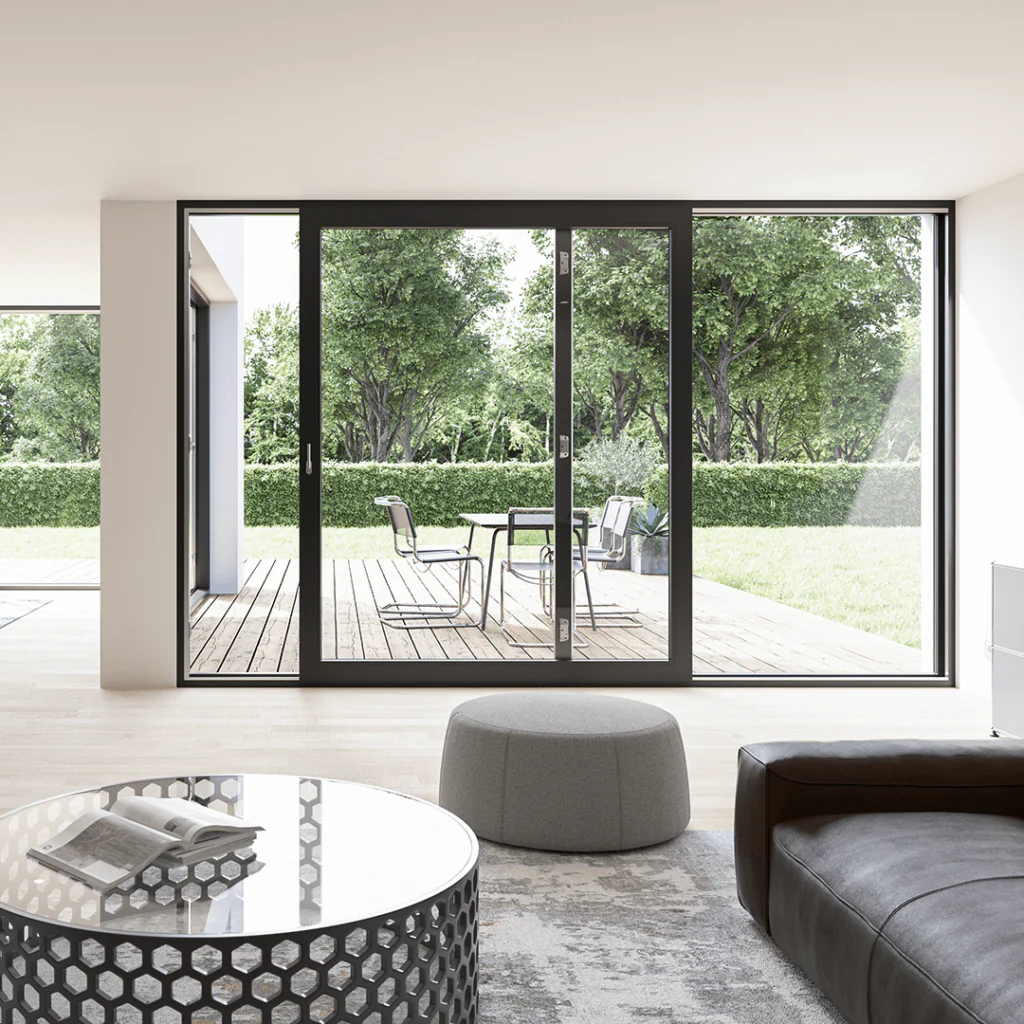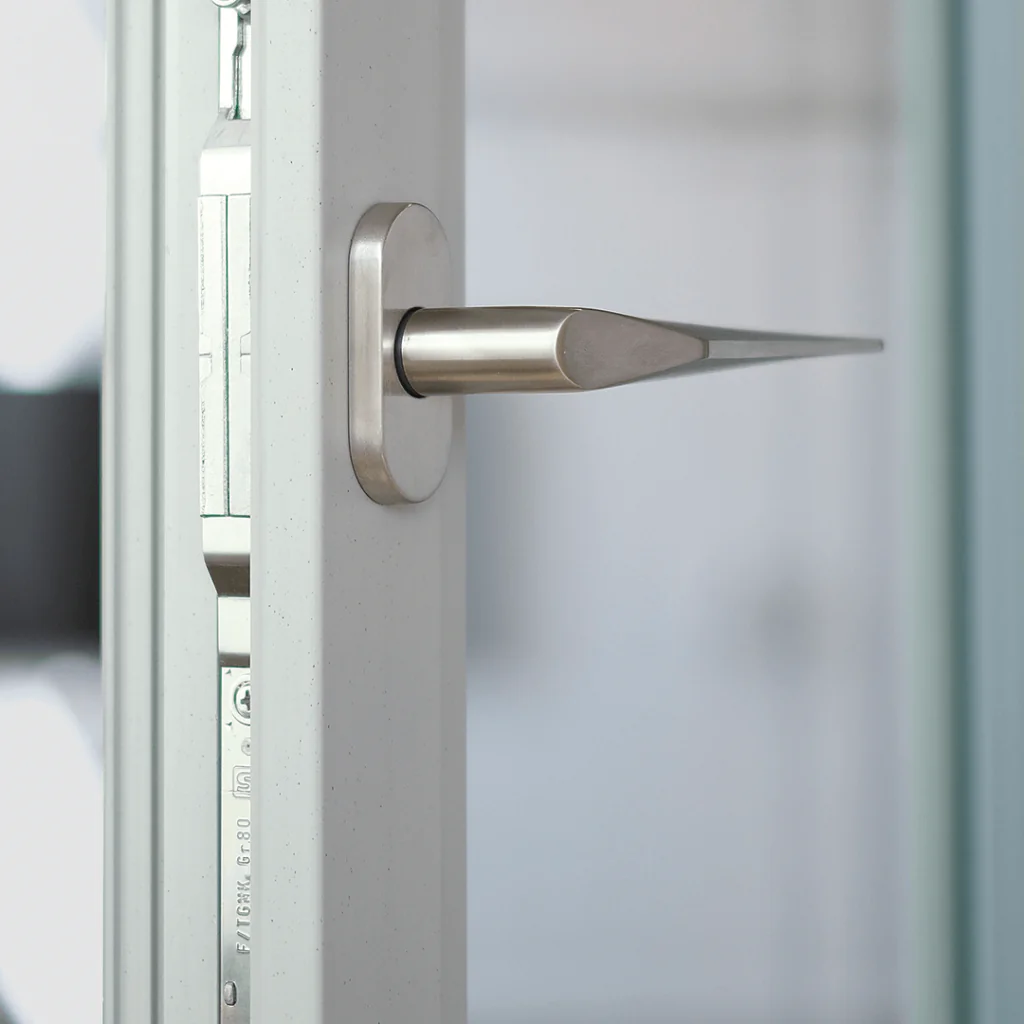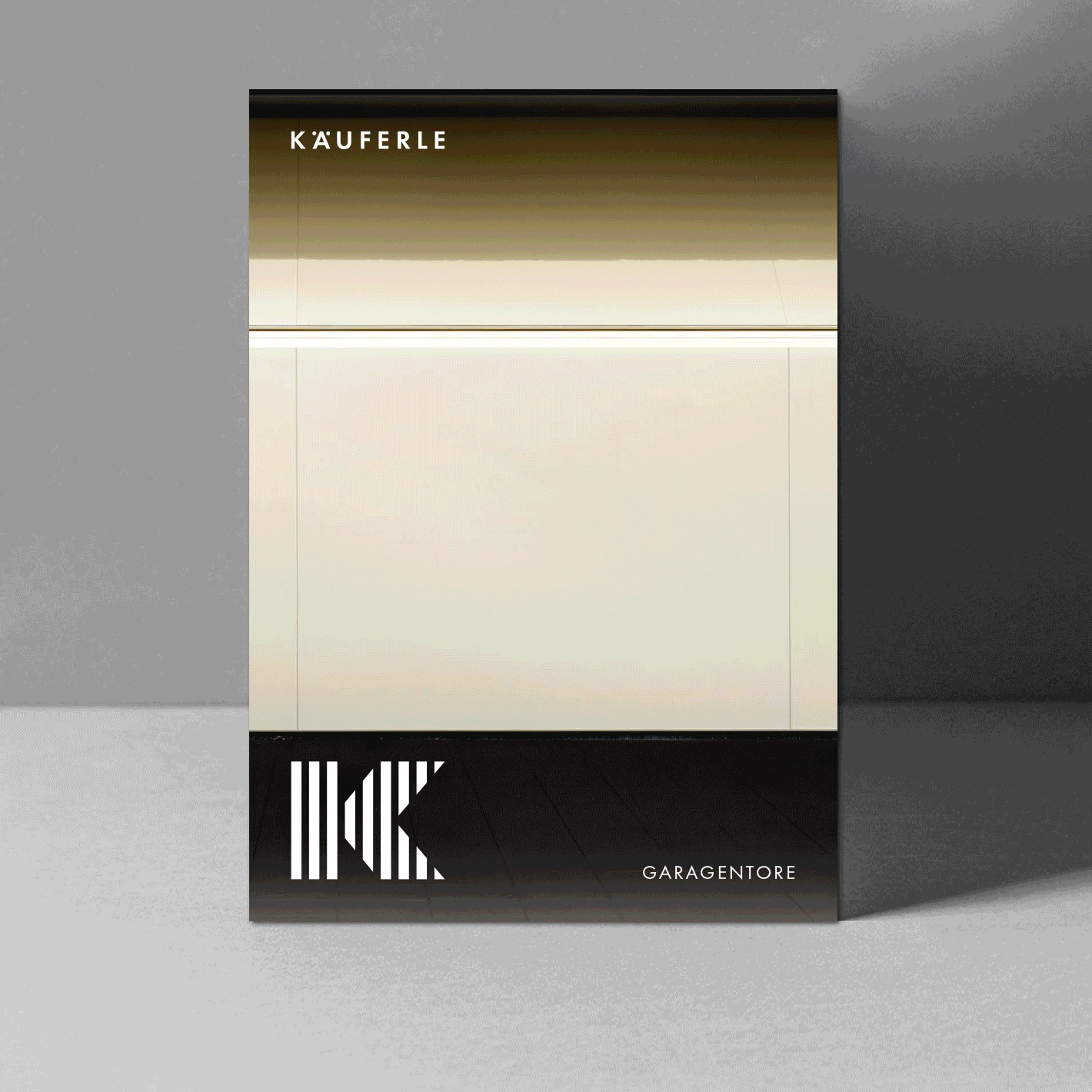Käuferle is a leading German manufacturer of garage doors, partition systems and enclosures. Around 25 years ago, we also began offering our customers a wide range of windows and doors. This also includes customised solutions for patio doors made of PVC-U - a material that is as robust as it is easy to clean, light-resistant and weatherproof, helping to protect your assets in the best possible way.
Käuferle products are always well thought out in terms of craftsmanship and are part of holistic solutions. Our patio doors therefore offer the right solution for every building situation. What sets them apart are the different types of opening. What they have in common is the high quality of workmanship, the high security standards and the modern technical equipment.
Our patio doors are processed and installed taking into account your specific project specifications, installation situations and dimensions. If required, we will be happy to assist you with the planning. Our aim is to create door solutions that provide plenty of daylight, thermal and sound insulation, security and protection. Our unique selection of colours, shapes and functions also opens up great scope for design.


Patio doors are easily accessible on the ground floor. They are usually located in places at the rear of the building that are not easily visible and are often concealed by hedges, privacy screens or sun protection elements. And they offer burglars a large target area due to their size alone - especially if they are double-leaf. In terms of burglary protection, patio doors should therefore be looked at particularly closely.
There are many options for securing patio doors: Security glass, high-quality locking systems with lockable handles and alarm systems. Patio doors can also be secured by roller shutters with anti-lift devices. Alarm systems and security glass are always recommended for homes in generally unsafe neighbourhoods. Lockable handles are suitable for average residential areas and as a first measure - which can also be retrofitted.
Two thirds of all burglaries do not occur at the front door, but at windows, balcony and patio doors. The mechanical security of patio doors should therefore be a top priority. Lockable handles prevent patio doors from being opened easily if the glass is broken through. Bar locks (which can also be retrofitted) offer additional protection. Vertically sliding rods connected to the handle secure the patio doors with additional upper and lower locking points.
The properties of burglar-resistant doors and windows are categorised into seven resistance classes (RC) in accordance with DIN EN 1627. Basically, the longer a window or patio door resists, the higher its resistance class. Important facts about burglar-proof windows, resistance classes and retrofittable security elements can be found here.
The standard width and height for single-leaf patio doors are 80 to 90 x 200 cm. These figures describe the external frame dimensions, so it quickly becomes clear that smaller widths are not recommended. This is because the clear passage width when the door is open is relevant in everyday life, which can be up to 20 cm smaller depending on the manufacturer and frame material. Heights of up to 250 cm are generally possible without any problems.
Double-leaf patio doors without centre mullions allow the entire clear width to be used as a passageway when the doors are open. With this opening mechanism, only one of the two doors can be opened as a tilt and turn door, while the other must be designed as a swing door. If both doors on double-leaf patio doors are to have a turn/tilt mechanism, a centre post is required. Fixed glass side panels can be added to single or double-leaf patio doors to allow more light into the interior.
Stepless access to the terrace cannot be achieved with standard frame profiles. However, there are threshold constructions that only require a threshold of around 2 cm to ensure watertightness. Patio doors with magnetic seals are completely threshold-free. When the doors are closed, two magnetic strips ensure that the floor joint is sealed. If the terrace is lower than the interior, external steps can be easily removed by raising the terrace level.
The most convenient type of sliding door for patio doors is the lift and slide door, which can be moved to the side almost silently and easily with the help of running wheels in the frame. Just like conventional patio doors, lift and slide doors also have the highest burglary protection standards and thermal and sound insulation values, depending on the equipment and material. Innovative sealing systems also guarantee maximum wind and driving rain tightness as well as optimum sound insulation.
Parallel tilt and slide doors can be tilted for ventilation and slid open sideways for access with a smooth-running single-handed lever handle. When opening, the sash initially moves to the tilt position; when the handle is turned further, the sash returns to the parallel position and can then be slid to the side in front of fixed glazing. Parallel sliding and tilting doors are often used when hinged doors are in the way or there is not enough space for them.


Driving rain occurs when heavy rain and wind come together. Driving rain tightness is classified in accordance with DIN EN 12208 and DIN EN 1027. Among other things, test procedures are used to measure the extent to which frame profiles deflect under different wind loads. These deflections can impair the wind tightness in rebate and sealing areas. In terms of building physics, both driving rain tightness and wind tightness are closely linked to thermal insulation, for which both types of tightness are essential.
Leaks in patio doors can have various causes. Sluggish tilt and turn doors, for example, indicate that the door leaves are hanging crookedly and need to be readjusted. Such adjustments can be made using adjusting screws in the fittings (corner bearings, scissor bearings). However, defective door seals are also a possible cause of inadequate driving rain and wind tightness. These can be replaced or supplemented with sealing strips.
External sun shading also serves as a privacy screen. However, its primary task is to protect interior rooms from excessive heat input from solar radiation. Textile screens are particularly suitable for this purpose and, depending on the design, can be used not only for privacy protection but also for darkening. An alternative are venetian blinds, which provide effective solar shading with horizontally positioned slats and at the same time offer a virtually uninterrupted view of the outside.
Here you will find answers to frequently asked questions about patio doors:
We rely on PVC-U profiles that create optimum conditions for all types of patio doors.
Lockable handles prevent burglars from simply opening the doors after breaking through the glass to get into the house. The prerequisite is, of course, that the door is actually locked and the key is not inserted.
They allow larger door openings without having to provide space in the interior for the door leaves to swing open.
They are closely linked to thermal insulation - leaky patio doors allow cold air to flow in, which condenses on the frame and in the door reveal, causing moisture damage.
In our Käuferle Workbooks, we offer architects, planners and builders an overview of our diverse product range and our comprehensive services. So that you are always well informed.
In our Käuferle Workbooks, we offer architects, planners and builders an overview of our diverse product range and our comprehensive services. So that you are always well informed.

Due to defined exceptions in the standards and guidelines, an emergency stop command device is not mandatory for our door systems, which of course comply with the latest state of the art.



































We will get back to you as soon as possible!
We will take care of your request immediately and get back to you as soon as possible.